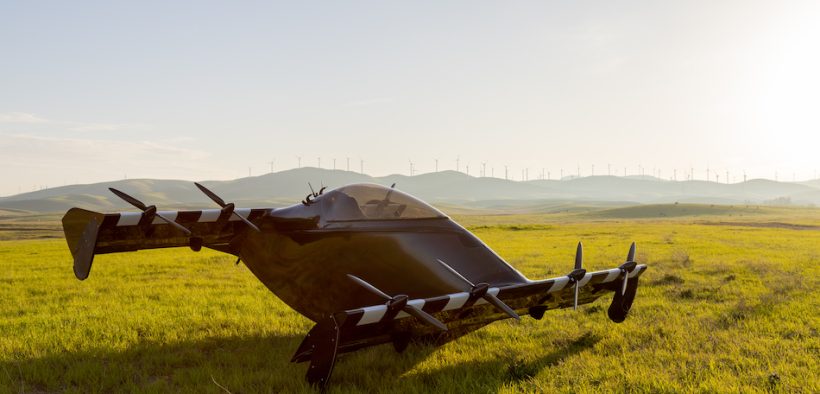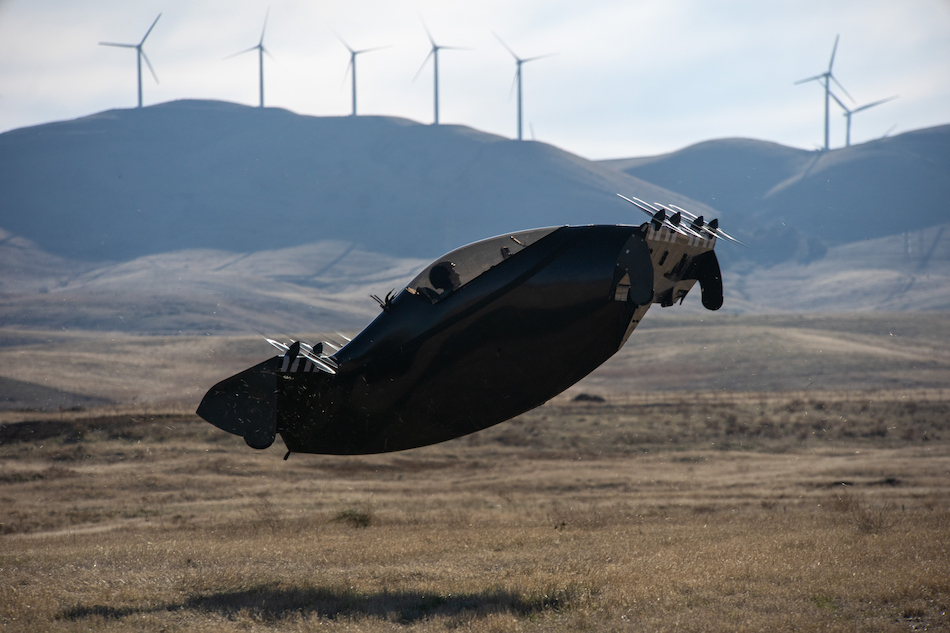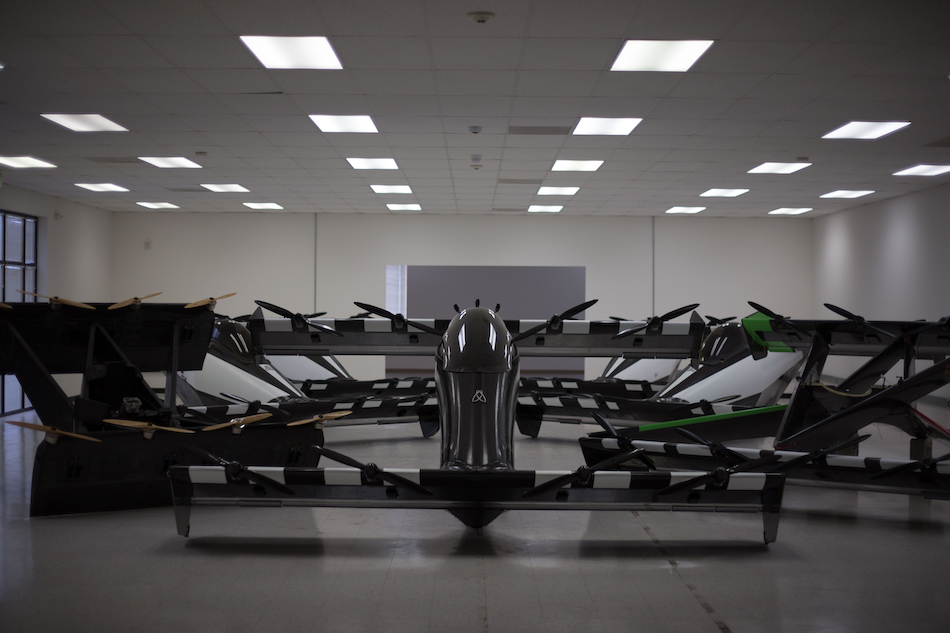A New Era in Personal Aviation
Share

The concept of electrically powered vertical-take-off-and-landing (eVTOL) aircraft, often referred to as flying cars, is no longer confined to the realm of science fiction. In recent years, numerous companies have been vying to introduce designs ranging from scaled-up multi-rotor drones to futuristic hybrids. However, these are not the Jetson-like family saloons with untrained drivers we might have envisioned. Most eVTOLs will require licensed pilots and are likely to be deployed initially as aerial taxis.
In stark contrast to this trend, one company has remained committed to the original vision of creating a personal vehicle that individuals can purchase and pilot themselves. Helix, developed by Pivotal (formerly known as Opener until October 5th), based in Silicon Valley, is a single-seat eVTOL that could be more accurately described as a “flying motorbike.” What sets Helix apart is its careful adherence to the regulations governing microlight aircraft in the United States. As a result, anyone, with or without a pilot’s license, can operate it over non-built-up areas. Starting next year, those with $190,000 to spare can place orders for personal use, with deliveries expected to commence in June.
“Even though Helix can be operated without a pilot’s license, buyers will still need to undergo some training to ensure safety, as Pivotal is committed to preventing any early accidents that could harm sales.”
The journey to develop Helix has been anything but smooth. Pivotal, founded by Canadian mechanical engineer Marcus Leng in 2011, represents a story of perseverance and innovation. Leng, intrigued by the idea of electrically powered flight, built a prototype named BlackFly and conducted its maiden flight in his own backyard in Ontario. Despite its rudimentary construction, the flight marked the first-ever lift-off of a human-carrying eVTOL craft.

Fast forward twelve years of iterative development, changes in leadership, and rebranding, and Pivotal believes it has a market-ready product in Helix. While the aircraft has evolved in design and materials, the fundamental concept remains consistent, featuring a monocoque body, two pairs of wings, and eight propellers. The absence of an undercarriage makes it resemble a squashed “H” in the sky, and its curved belly helps stabilize the craft during landing.
Even though Helix can be operated without a pilot’s license, buyers will still need to undergo some training to ensure safety, as Pivotal is committed to preventing any early accidents that could harm sales. The aircraft’s software is designed to limit manoeuvres that fall outside its safety parameters, and it is equipped with a parachute for emergency situations. Pulling the parachute release initiates an explosive charge that detaches the canopy and safely lands the aircraft.
Helix offers a respectable top speed of 100 kilometres per hour, but its range is limited to 30 kilometres. Charging can be a somewhat lengthy process, taking 4.5 hours from the mains, though a high-power system can reduce this time to 75 minutes. While we may not yet be in the age of the Jetsons, Helix represents a significant step forward in personal aviation, offering a possible pathway to the skies. For CEOs and investors, it signifies a promising investment in the future of aviation and urban mobility.

What are the current challenges in eVTOL technology?
The electric Vertical Takeoff and Landing (eVTOL) technology is advancing rapidly, but it still faces several challenges that need to be addressed to realize its full potential for urban air mobility and other applications. Some of the current challenges in eVTOL technology include:
- Battery Technology: The energy density of batteries remains a significant limitation. To achieve practical flight ranges, eVTOLs require high-capacity batteries that are lightweight and safe. Improvements in battery technology are critical to increasing flight endurance and reducing weight.
- Weight Management: eVTOLs need to be as lightweight as possible to maximize efficiency and performance. This requires the use of advanced materials and design techniques. Reducing the weight of components like motors, airframes, and batteries is an ongoing challenge.
- Charging Infrastructure: Developing an infrastructure for charging or swapping batteries for eVTOLs is a significant challenge. For urban air mobility to be practical, there must be a network of charging stations at vertiports or other locations.
- Noise Reduction: The noise generated by eVTOL aircraft can be a significant concern, particularly for urban environments. Reducing noise levels to make eVTOLs acceptable for use near populated areas is a challenge.
- Regulatory Approval: eVTOLs are subject to stringent safety and certification requirements. Developing certification standards and processes that are both rigorous and adaptable to new technologies is an ongoing challenge.
- Traffic Management: Integrating eVTOLs into existing airspace and air traffic control systems is complex. Coordinating with other air traffic, including manned aircraft, drones, and other eVTOLs, presents a challenge.
- Infrastructure Development: Building vertiports and maintenance facilities is a major undertaking. Urban infrastructure will need to be adapted to accommodate eVTOLs, and this may require significant investment.
- Cost Reduction: Currently, eVTOLs are expensive to manufacture and operate. Finding ways to reduce costs and make these vehicles economically viable is essential for their widespread adoption.
- Safety: Ensuring the safety of eVTOL operations, including redundancy systems, emergency procedures, and fail-safes, is a complex challenge. Safety standards for eVTOLs need to be developed and enforced.
- Pilot Training: eVTOLs may be operated by a range of individuals, from trained pilots to autonomous systems. Developing appropriate training programs for pilots and operators is crucial.
- Public Acceptance: Building public trust and acceptance for eVTOL technology is vital. Addressing concerns related to safety, noise, privacy, and the overall impact of these vehicles on urban environments is a challenge.
- Environmental Impact: While eVTOLs are more environmentally friendly than traditional aircraft with internal combustion engines, their environmental impact, such as the source of electricity for charging, needs to be carefully managed.
Addressing these challenges will require collaboration between technology developers, regulators, urban planners, and other stakeholders. As advancements continue, eVTOL technology has the potential to revolutionize transportation and provide sustainable solutions for urban mobility and beyond.

























